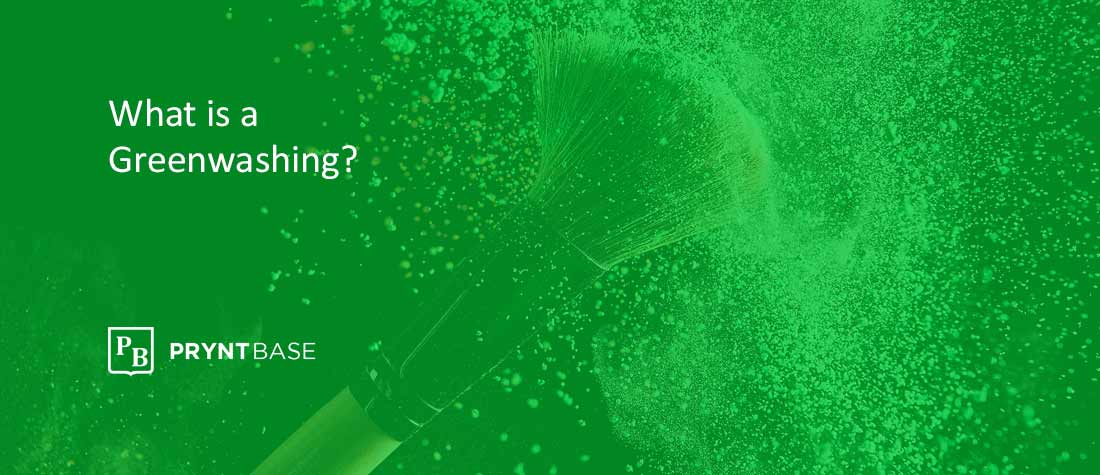What is Greenwashing? Everything You Need to Know About It

There’s a buzzword going around if the “eco-friendly” products you buy truly benefit the environment? With sustainability becoming a major concern, many businesses are eager to showcase their commitment to environmental responsibility. However, not all claims are as genuine as they seem. This is where the concept of greenwashing comes in—a deceptive practice that undermines real sustainability efforts.
Understanding and identifying greenwashing is crucial for making informed choices and supporting genuine environmental initiatives. By recognizing the difference between true eco-friendly practices and misleading claims, we can hold companies accountable and foster a more sustainable future.
This topic is a big one for print companies who market their services because being eco-friendly in many cases is a part of their messaging.
What is Greenwashing?
Greenwashing, in technical terms, refers to the practice of conveying a false impression or providing misleading information about how a company’s products are more environmentally sound than they really are. It involves exaggerating environmental claims to appear more sustainable and attract eco-conscious consumers.
What is Greenwashing in Simple Terms?
Simply put, greenwashing means making it seem like a product is good for the environment when it really isn’t. Companies might use buzzwords like “natural,” “eco-friendly,” or “green” without backing these claims with substantial evidence.
Examples of Greenwashing
Many companies and organizations engage in greenwashing to enhance their public image and appeal to environmentally conscious consumers. Here are a few notable examples of Greenwashing (with the names of the companies not included):
Greenwashing Example #1
A prominent tech company advertised its new smartphone as being made from recycled materials to appeal to eco-conscious buyers. However, investigations revealed that only a small portion of the phone actually utilized recycled components. The majority of the phone’s materials remained non-recyclable plastics, making the environmental benefits negligible compared to the claims made.
Greenwashing Example #2
A popular fast food chain introduced “eco-friendly” packaging, claiming it was biodegradable. This claim attracted customers who wanted to reduce their environmental impact. However, further scrutiny revealed that the packaging only degraded under specific industrial conditions, which are not typically found in landfills. As a result, the packaging still contributed significantly to waste and pollution.
Greenwashing Example #3
An automobile manufacturer promoted its electric cars as emission-free and environmentally friendly. While the cars themselves produced no tailpipe emissions, the manufacturing process involved significant carbon emissions. Additionally, the electricity used to charge these cars often came from non-renewable sources, diminishing the overall environmental benefits.
Is Greenwashing Bad?
Greenwashing is fundamentally problematic because it misleads consumers who genuinely want to make environmentally responsible choices. By exaggerating or falsifying environmental claims, companies undermine trust and distract from genuine sustainability efforts.
However, it’s also important to acknowledge that many businesses, even those that engage in some level of greenwashing, might still contribute positively to environmental goals. While their practices might not be perfectly eco-friendly, they can still represent a step in the right direction.
Are Greenwashing and ESG the Same Thing?
Many people compare greenwashing with ESG (Environmental, Social, and Governance) practices. Let’s break down the differences:
What is ESG?
ESG stands for Environmental, Social, and Governance criteria, which are used to evaluate a company’s operations beyond financial performance. These criteria consider how a company impacts the environment, how it manages relationships with employees, suppliers, customers, and the broader community, and how it governs itself.
How is ESG and Greenwashing Different?
ESG practices involve tangible actions and transparent reporting on a company’s environmental and social impacts. Companies committed to ESG provide detailed and verifiable information about their efforts to reduce carbon emissions, improve labor practices, and ensure good governance. In contrast, greenwashing involves making exaggerated or false claims about environmental benefits without substantive backing. While ESG focuses on genuine, measurable impact, greenwashing is more about creating a superficial, misleading image of sustainability.
Understanding the difference between ESG and greenwashing is crucial for consumers and investors alike. By promoting genuine ESG practices and holding companies accountable for their claims, we can foster a more sustainable future. Let’s support businesses that truly commit to environmental and social responsibility and push back against those that engage in deceptive greenwashing practices.
